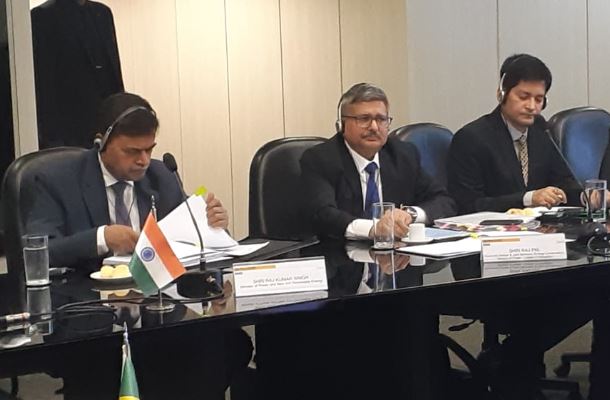 The Pain In The Details
The Pain In The Details India’s Minister of State(I/c) for Power and New & Renewable Energy RK Singh was at the BRICS Energy Ministers meet at Brasilia on Monday, where he informed attending ministers that India will install more than 200 thousand MW of Renewable Energy capacity by 2022. He also said that India’s Energy mix will comprise about 55 percent from RE as against the target of 40 percent by 2030. The number is bound to raise eyebrows at a time when the government is regularly seen defending its ability to get tho the original target of 175 GW, in an environment of increasing skepticism, especially from the number crunchers, namely, domestic and international research agencies.
Following is the text of his address on the issue:
” In the past 4-5 years, we have seen several developments in the field of the energy sector in our country. In the past 5 years, we have connected every village, every household. In the past 17 months, we have connected 26.6 million households. We have connected almost every household with electricity. This was our first priority because we believe that energy access is central to the development and therefore energy access has to be universal.
We have transitioned a country which had a deficit so far as energy production capacity was concerned, to a country which is now a surplus and we are able to produce more energy than we consume and we are exporting energy to our neighboring countries. We have unified our whole country in one grid. This is one of the largest unified grids in the world extending from the Himalayas to the south. From the extreme north to the extreme south, from extreme east to extreme west so its now one nation one grid. At the same time, we decided that to increase the development needs we need to increase our consumption of energy. At the same time, we follow a trajectory that will ensure to reduce the carbon footprint. We have decided that by 2022, we will establish 175 thousand Megawatt of renewable energy capacity. We are close to achieving the target. The RE capacity which has been installed is 83000 MW and under installation is 31 000 MW and capacity which is underbidding is 35000 MW. So this becomes around 140-145 thousand MW. In hydro, we have installed capacity of around 45000 MW and under installation, capacity is about 13000 MW. Which makes it around 60,000 MW. So we will cross 200 thousand MW capacity of renewable energy by 2022.
Now we have a set a new target for ourselves. Our prime minister at the United Nations General Assembly Climate Summit announced that we will install 450 GW or 450 thousand MW of renewable energy capacity by 2030. We have decided that by 2030, about 40% of our installed capacity will come from renewables but we will be crossing that. By 2030, more than 55% of installed capacity will come from renewables. So we have followed a quick approach towards reducing carbon footprints. One is the addition of capacity of Renewables and the other is reducing our energy consumption. In our quest to reduce energy consumption, we have taken a number of steps for enhancing energy access. We have set a target for ourselves for enhancing the energy efficiency of the power industry. In the first round, we have saved 8.63 million tonnes of oil and in the 2nd round, we have achieved a further reduction in energy consumption of about 3 million tonnes of oil per year. In reducing the consumption of energy by appliances, we launched a scheme to lay down standards for our appliances. And the electric savings are now 50 billion units per year, this contributed to the reduction of CO2 emissions by 41 million tonnes. We announced the largest programs for conversion to LEDs.”
Looking at that breakup, with Hydro now at 60 GW, there is finally some clarity on the logic behind the government’s insistence on reaching 175GW. Keep in mind that when articulated for the first time, large hydro was not being considered. Solar and Wind, despite the still optimistic numbers being placed ‘underbidding’ and ‘due forbidding’, would account for under 150 GW, which is more or less in line with the original predictions. What should be disappointing is the low expectation from rooftop solar, which has seemingly been replaced quietly by the contribution from large hydro. Rooftop Solar, which was set to have a 40 percent contribution to the overall target, seems set to be replaced by mostly utility-scale solar, besides large hydro. Our view? Unsustainable. Rooftop solar simply offers too many advantages to be ignored for long. With state governments playing spoilers possibly in the minister’s low expectations, it is perhaps up to them to make the right changes in policies to support this key sector. MW for MW, it will create 4 times the jobs as compared to utility solar or wind, and just for that, it should be a focus area.



























